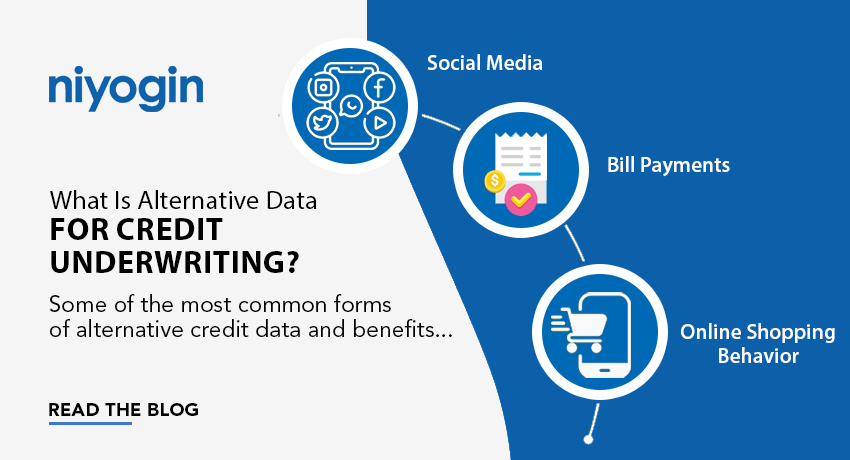Banks, NBFCs, and other financial organizations in the lending business use credit underwriting to assess a borrower’s risk profile. However, using alternative data to evaluate creditworthiness can greatly improve credit assessment accuracy, especially for individuals and enterprises with limited or unusual credit histories.
Alternative credit underwriting data refers to information not typically used in the traditional credit underwriting process. This can include data from rental payments, telecom and mobile data, online shopping behavior, utility payments, social media activity, public records, etc. The use of alternative data in credit underwriting is becoming increasingly popular as lenders look for new ways to assess the creditworthiness of potential borrowers. This is known as alternative credit data, which can include information from various sources beyond the traditional credit bureaus. Some of the most common forms of alternative credit data used by lenders include:
- Alternative Financial Services Data
This data includes information on consumers’ use of small installment loans, single-payment loans, point-of-sale financing, auto title loans, and rent-to-own agreements. It can provide information about a consumer’s payment history and creditworthiness.
- Consumer Permission Data
With a consumer’s agreement, lenders can access transactional and account-level data from financial accounts to better estimate income, assets, and cash flow. This information can also provide insight into payment history on non-traditional accounts such as utilities, cell phones, and streaming services.
- Rental Payment History
Property managers, electronic rent payment providers, and rent collection firms can all share information about consumers’ rent payment history and lease terms.
- Full-File Public Records
Public records at the local and state levels can provide information on a consumer’s professional and occupational licenses, education, property deeds, and address history.
- Data on Buy Now, Pay Later (BNPL)
Payment and return history, as well as upcoming planned payments, can be displayed in BNPL trade line and account data. This information can provide insight into a consumer’s creditworthiness, which may become even more relevant as consumers increasingly use this new sort of point-of-sale financing.
Benefits of Using Alternative Data
- The use of alternative data provides a more holistic view of a borrower’s financial situation and helps lenders make more informed decisions.
- Alternative data helps lenders reach a wider pool of potential borrowers.
- Alternative data can be handy for borrowers with limited credit history or credit problems in the past.
- The use of alternative data helps lenders reduce fraud and risk.
- Alternative data can be used to verify the information provided by borrowers.
- With the use of alternative data, lenders can assess a borrower’s creditworthiness more efficiently and cost-effectively.
- Lenders can use alternative data to offer personalized loan products to borrowers.
- Alternative data can be used to identify new market segments and opportunities for lending.
- Alternative data helps lenders stay competitive in a rapidly changing lending environment.
Gaining Access to Alternative Data
- Through partnerships with data providers
These lenders collect and analyze data from various sources, including social media accounts, mobile phone usage, and online shopping behaviour. They then package this data and sell it to lenders, who can use it to make more informed lending decisions.
- By using specialized software that extracts data from online sources
This specialized software can collect data from various sources, including social media accounts, mobile phone usage, and online shopping behaviour. Lenders can then use this data to assess the creditworthiness of potential borrowers.
- Lenders may use customer-permission data.
Some customers agree to share data with the lender to improve their creditworthiness. For example, a customer may give a lender permission to access their online banking information, which can provide insight into the customer’s spending habits and income. This data can be used to make more informed lending decisions.
As technology advances, we should expect to see more alternative data sources employed in credit underwriting. However, lenders must carefully weigh the dangers and benefits of using alternative data and guarantee that it is used ethically and responsibly.
